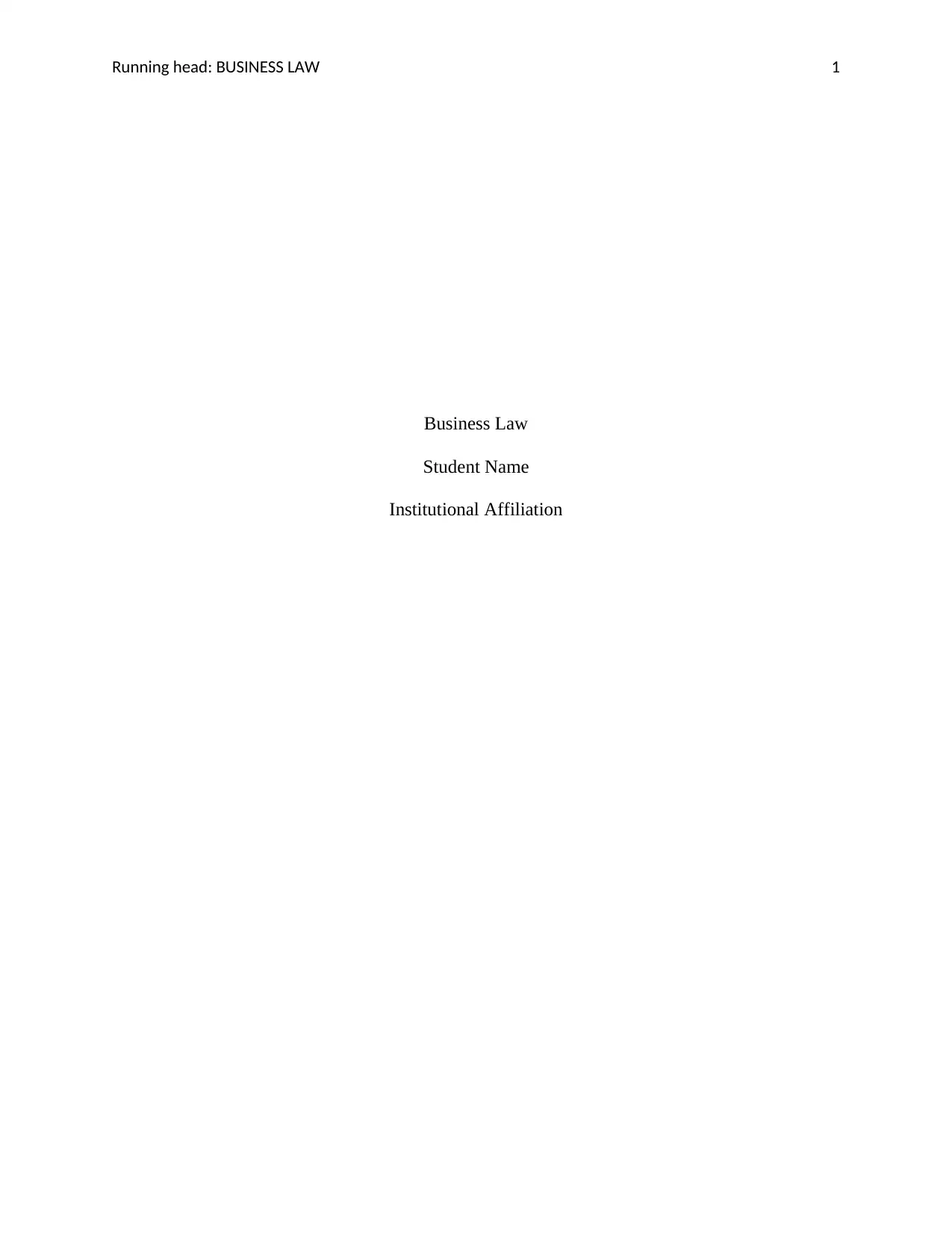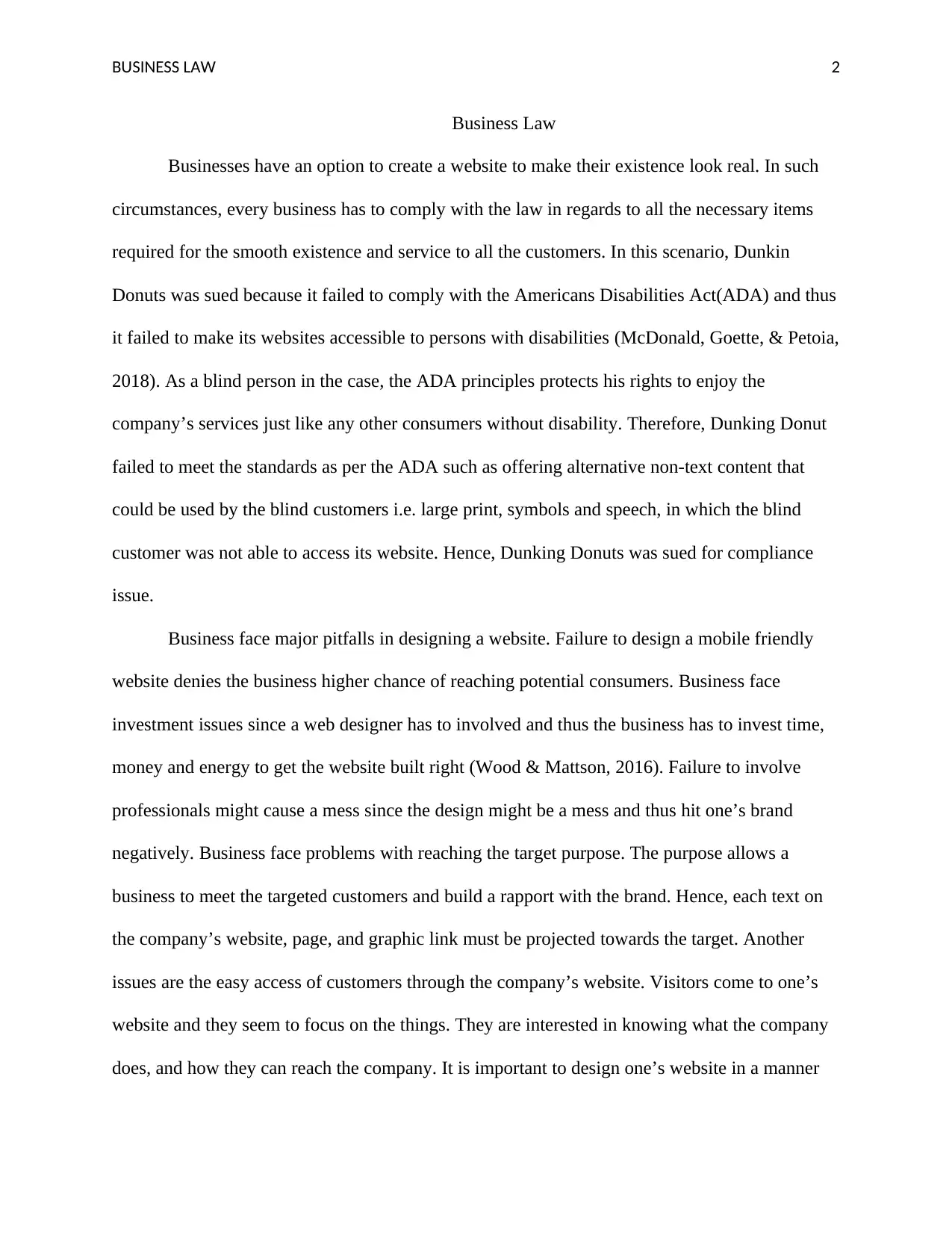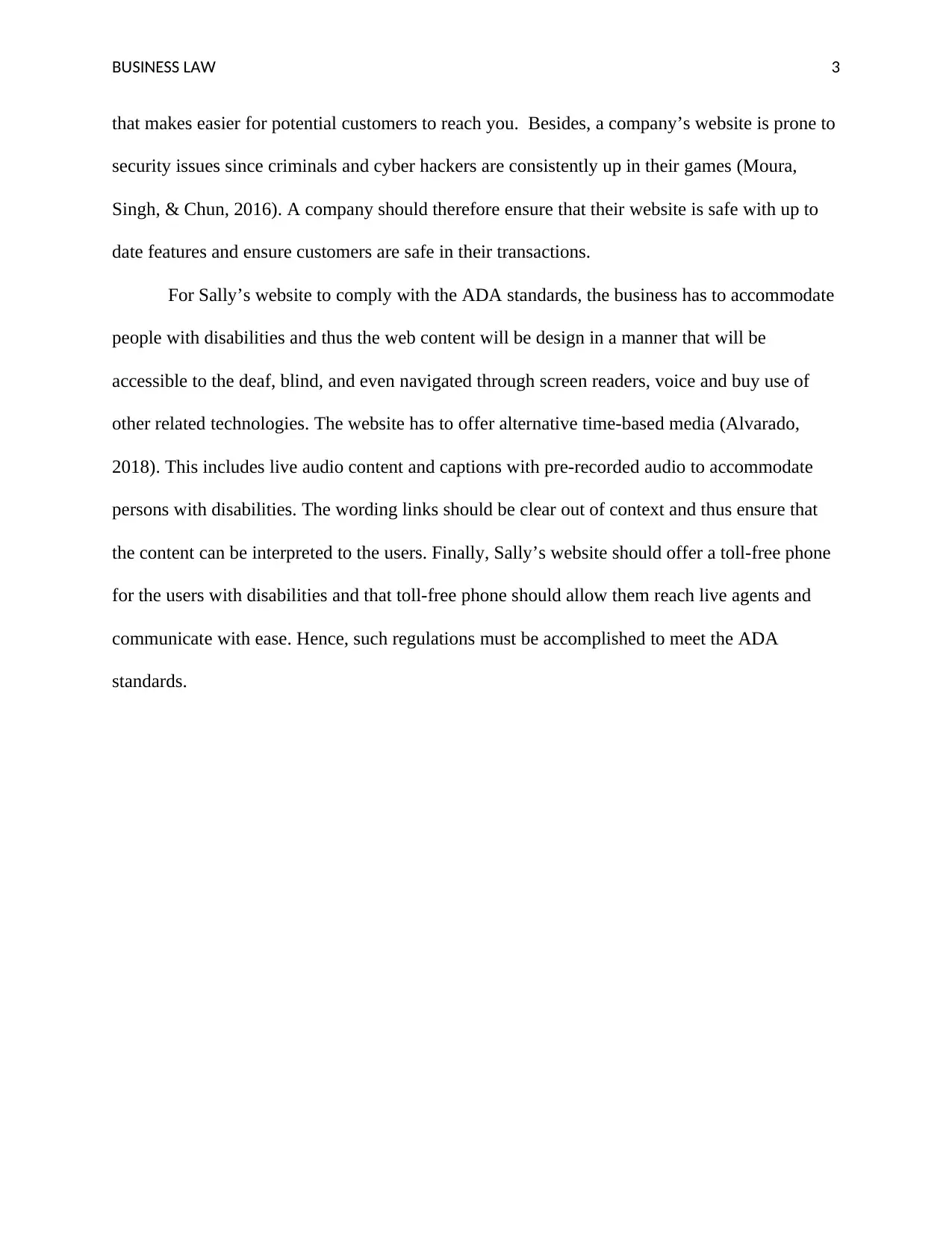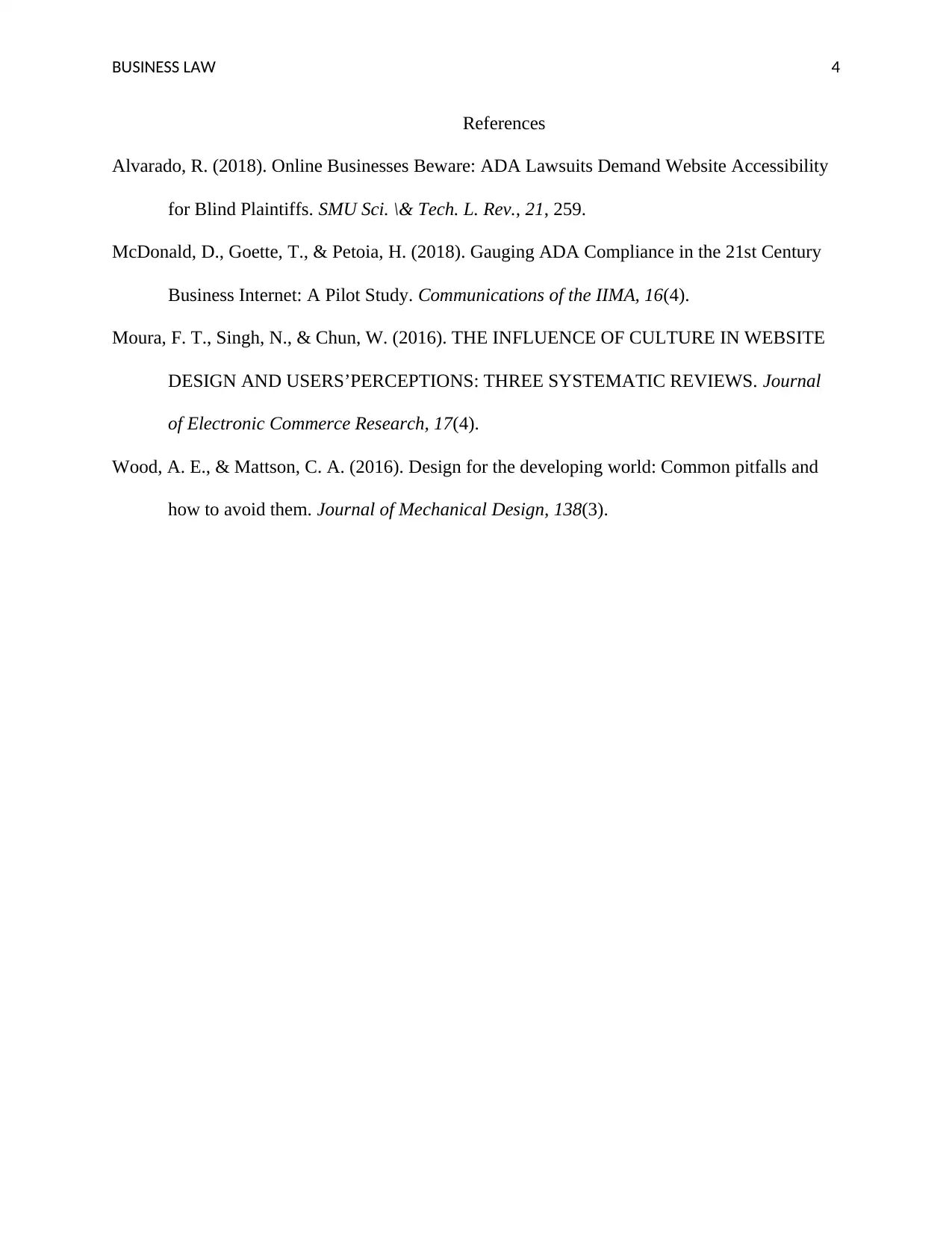Business Law Report: Dunkin' Donuts ADA Compliance and Website Design
VerifiedAdded on 2022/08/12
|4
|774
|75
Report
AI Summary
This report examines the legal implications of the Americans with Disabilities Act (ADA) on business websites, using the Dunkin' Donuts case as a primary example. The assignment highlights the requirement for businesses to ensure their websites are accessible to individuals with disabilities, specifically focusing on compliance with screen readers and other assistive technologies. It discusses the pitfalls businesses face in website design, such as failure to design mobile-friendly sites, investment issues, and the need to reach the target audience. The report emphasizes the importance of providing alternative text, captions, and toll-free phone access to comply with ADA standards. It also addresses security concerns and the need for clear and concise website content. The report concludes by outlining specific measures that Sally's website must implement to meet ADA standards, including accommodating users with disabilities, offering alternative time-based media, and providing a toll-free phone number for assistance. The references provided support the legal arguments and provide additional insights into the topic.
1 out of 4





![[object Object]](/_next/static/media/star-bottom.7253800d.svg)